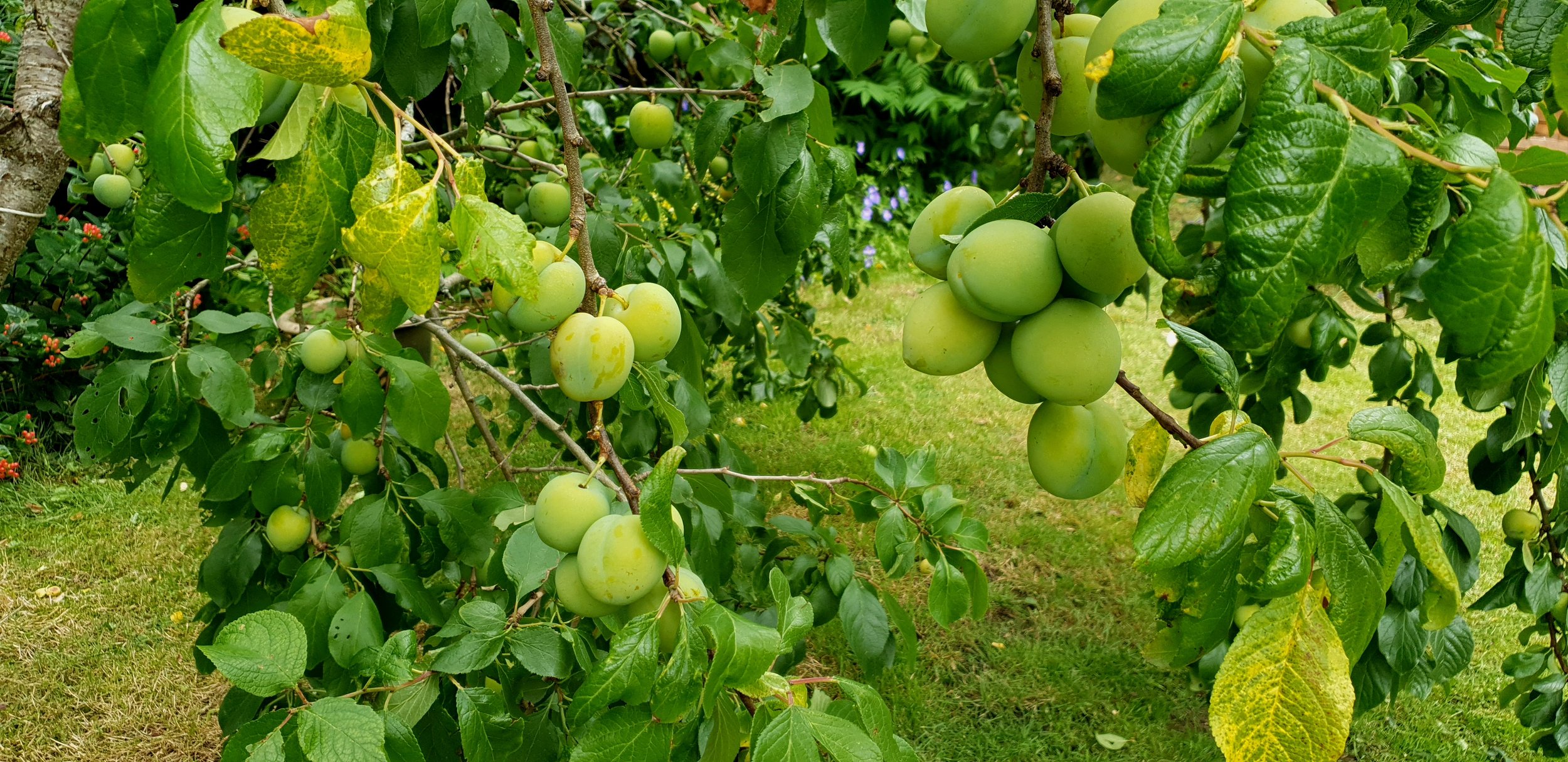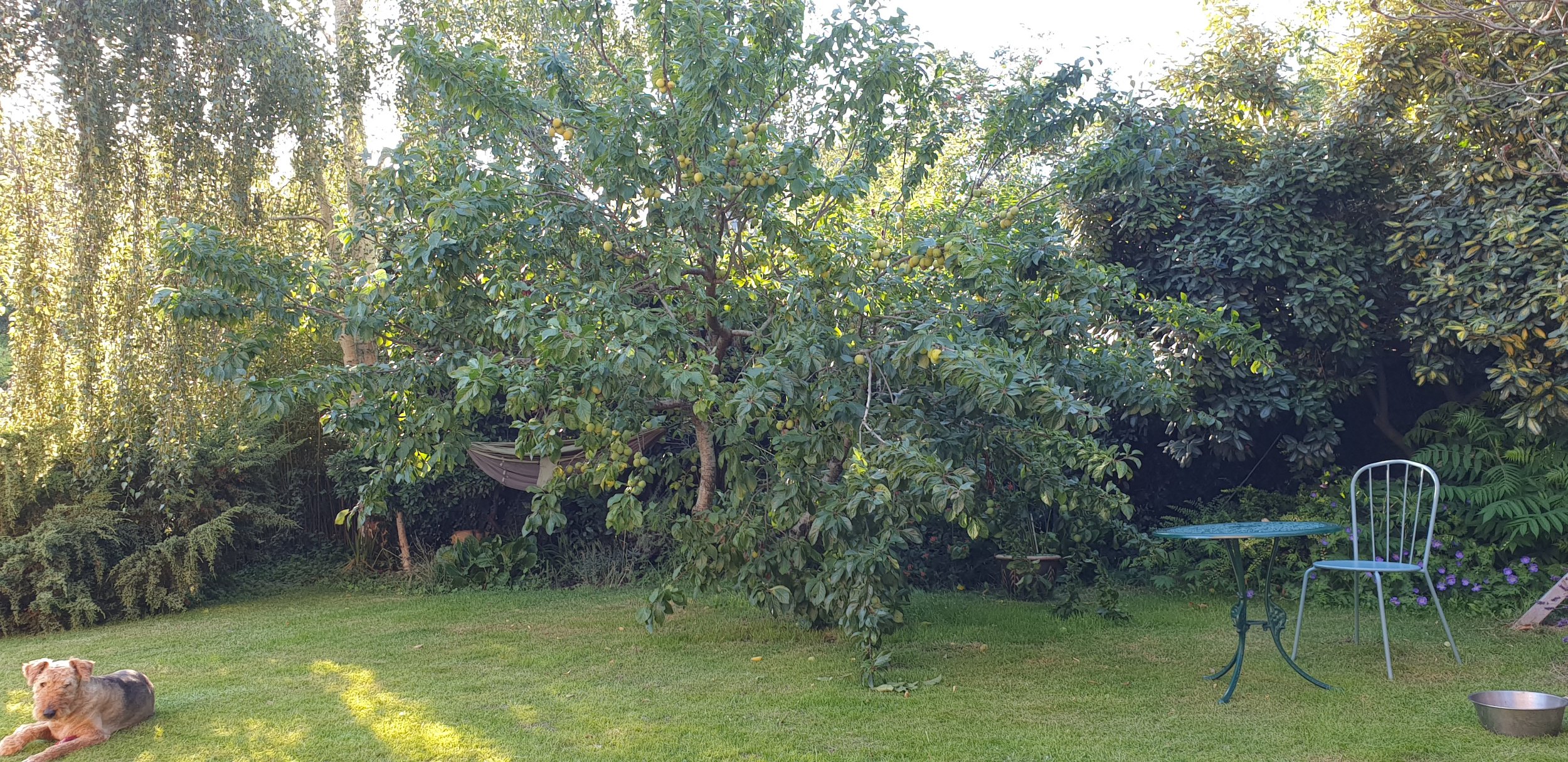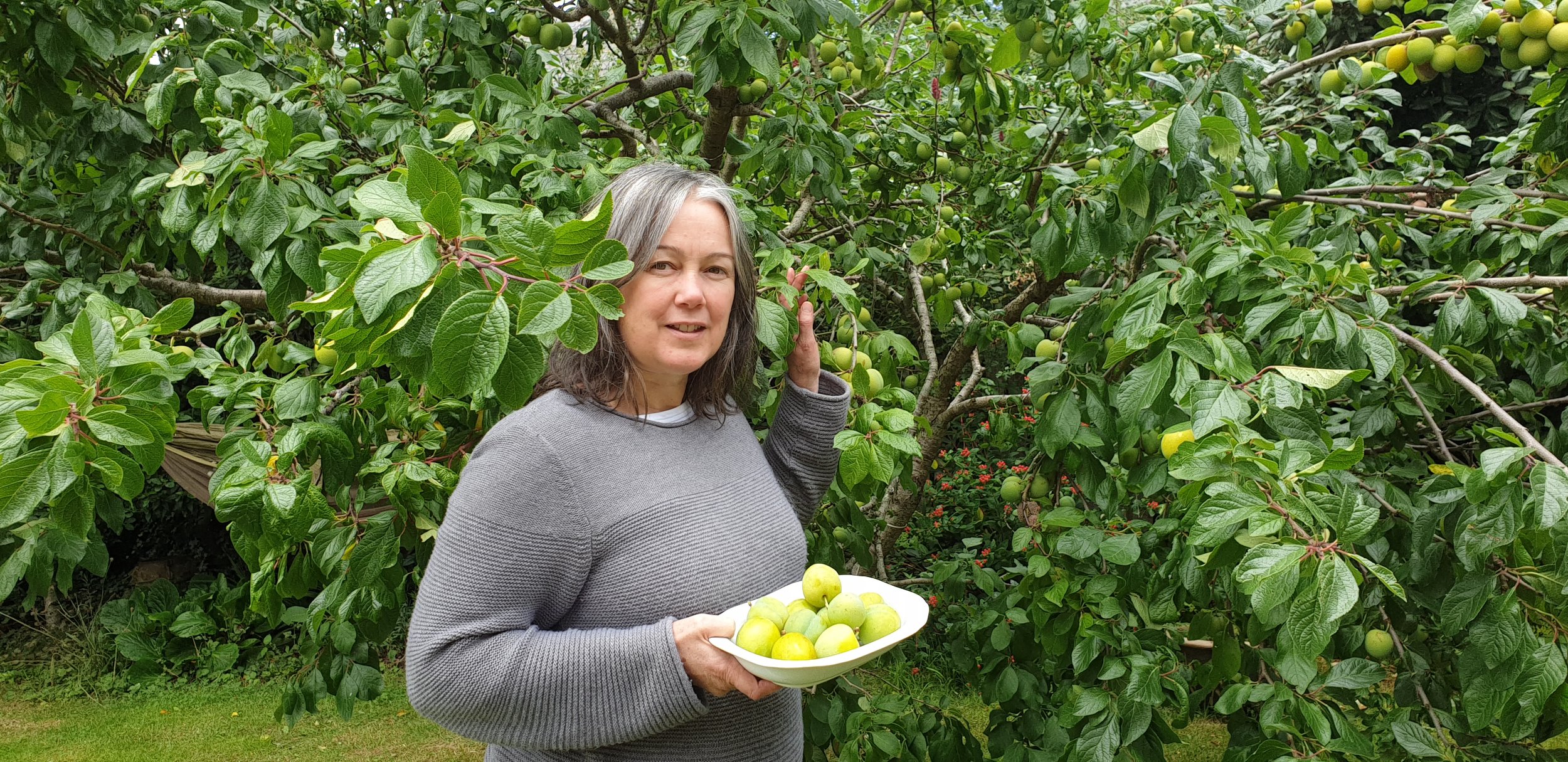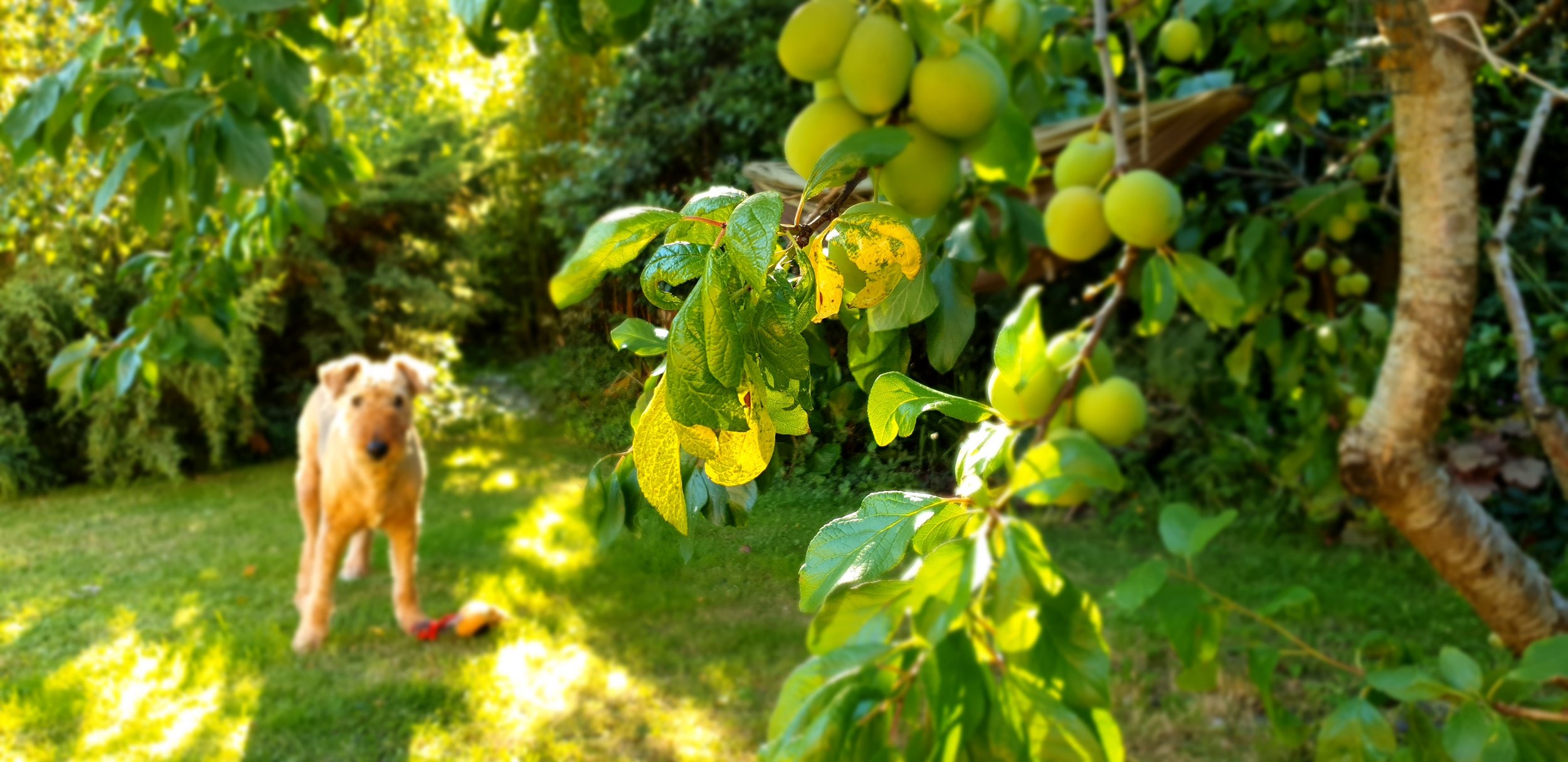Gingko Biloba and the Plum Tree - Part Two -
‘Is that your Plum Tree Becky that we saw in your blog posts last year?’ I asked
‘Yes it is, isn’t it amazing but I haven’t had time to prune it this year with one things and another.’ said Becky ‘Shall we have a go now?’
‘Are you kidding me!! I love pruning fruit trees!!’ I replied.
It’s one of my favourite gardening jobs actually because I get to feel a sense of control over the shape and size; it’s an opportunity to communicate with the tree and give it some love and attention and to see how happy the tree is in general and to check what care it needs, perhaps another tree is too close and crossing branches; or the grass has grown too far up to the trunk starving it of vital water and nutrients etc.
Without further ado we had grabbed some saws, loppers and secateurs from the shed.
things to consider
One of the things to think about when pruning fruit trees in the UK and temperate climates, is that the stone fruits i.e. ones that have stones in the centre of the fruit and not pips, need pruning before leaf drop and before the first frosts. This will give the wounds time to heal over before the frosts set in. Really ideally they say July onwards but I have waited until the fruit is harvested at least!
Becky’s plum tree has been pruned over the years but not for the last 3 maybe. So it had a strong unwanted upright growth response from previous years vigorous pruning.
So the first job to do is cut off the straight young upright growths from the main spreading branches - in this case they were 2-3 years old so were about thumb thickness and at least 1 metre in height.
The reason for this is that all the growth hormone auxin likes to shoot straight upwards
The Plum tree is a fairly established tree as you can see from the photos and with any older tree we can aim for about one third of the tree to be taken out if it really has got into bad shape - any more and it will be too much for it and will keep us in an endless cycle of hard pruning and upright growth response at the expense of fruit production and an exhausted tree!
So I was taught that to approach pruning we first of all need to take out any upright unwanted shoots that have grown suddenly in response to a previous hard prune, for a standard tree we are aiming for an open shape with room for branches to have good air circulation to prevent disease build up.
Then we are aiming for the three D’s - Dead parts; damaged and then diseased parts.
After this we are looking at any that are crossing over each other or rubbing branches to keep a good air flow and so that light can get to all parts of the tree.
Finally, for now, I would also say check its roots area and see how much grass if any is up to the trunk as this may need to be cut back a little so it doesn’t cause rot and also to give the tree a chance of some nutrients at it’s surface roots. Grass can be used to control a vigorous tree but smaller trees need to space ..





